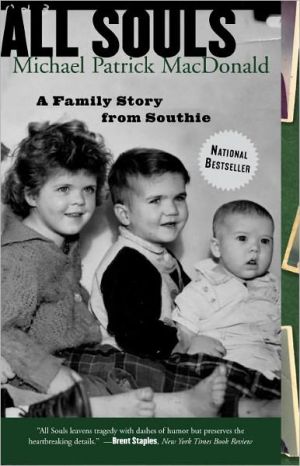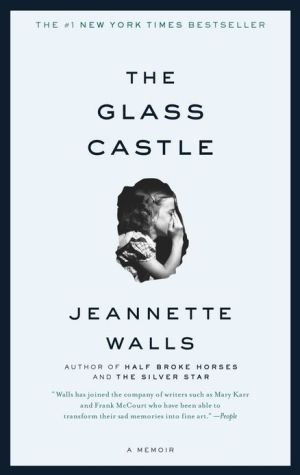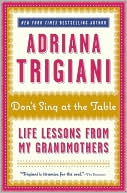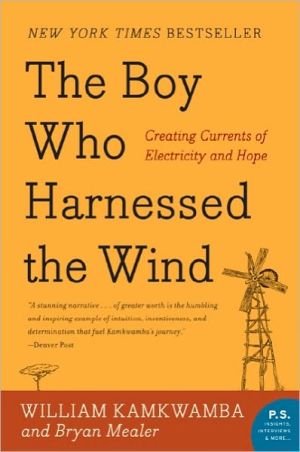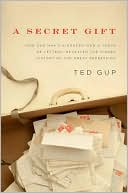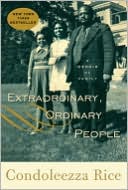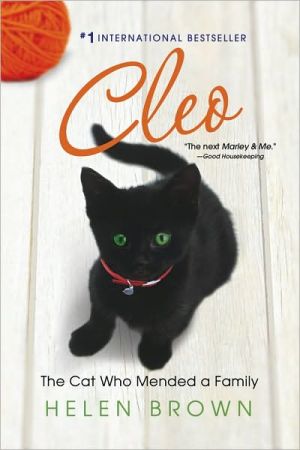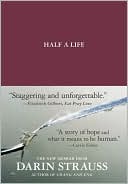All Souls: A Family Story from Southie
A breakaway bestseller since its first printing, All Souls takes us deep into Michael Patrick MacDonald's Southie, the proudly insular neighborhood with the highest concentration of white poverty in America. Rocked by Whitey Bulger's crime schemes and busing riots, MacDonald's Southie is populated by sharply hewn characters like his Ma, a miniskirted, accordion-playing single mother who endures the deaths of four of her eleven children. Nearly suffocated by his grief and his community's code...
Search in google:
A best-selling classic in a fresh new paperback edition A breakaway bestseller since its first printing, All Souls takes us deep into Michael Patrick MacDonald’s Southie, the proudly insular neighborhood with the highest concentration of white poverty in America. Rocked by Whitey Bulger’s crime schemes and busing riots, MacDonald’s Southie is populated by sharply hewn characters like his Ma, a miniskirted, accordion-playing single mother who endures the deaths of four of her eleven children. Nearly suffocated by his grief and his community’s code of silence, MacDonald tells his family story here with gritty but moving honesty. “All Souls is a memoir filled with desperation and despair, but there is also hope in it . . . [MacDonald's] discovery of his vocation in neighborhood activism is a refreshing change from most memoirs, which so often . . . are largely concerned with describing an ascent to celebrityhood.”—Julian Moynahan, New York Review of Books “Michael Patrick MacDonald takes us on a heartbreaking tour of his South Boston family.”—Frank McCourt, Irish America Magazine Publishers Weekly In this plainly written, powerful memoir, MacDonald, now 32, details not only his own story of growing up in Southie, Boston's Irish Catholic enclave, but examines the myriad ways in which the media and law enforcement agencies exploit marginalized working-class communities. MacDonald was one of nine children born (of several fathers) to his mother, Helen MacDonald, a colorful woman who played the accordion in local Irish pubs to supplement her welfare checks. Having grown up in the Old Colony housing project, he describes his neighbors' indigence and pride of place, as well as their blatant racism (in 1975 the anti-busing riots in Southie made national headlines) and their deep denial of the organized crime and entrenched drug culture that was destroying the youth and social fabric. MacDonald's account is filled with vivid episodes: of his brother Davey's horrific incarceration in Mass Mental and ultimate suicide; of the time Helen took her older kids to the hospital, where her current lover was a patient, to beat him up after he denied he was the father of the child she was carrying; of the murder of his brother Frankie by his compatriots after the police shot him in an armored-car robbery. But perhaps most shocking is the accusation that the FBI was paying Southie's leading gangster, Whitey Bulger, as an informant although they knew he was the neighborhood kingpin. MacDonald, who now works on multiracial social projects in Boston, does not excuse Southie's racism, but he paints a frightening portrait of a community under intense economic and social stress, issuing a forceful plea for understanding and justice. Agent, Palmer and Dodge. (Sept.) Copyright 1999 Cahners Business Information.
\ \ \ \ \ Chapter One\ \ \ ALL SOULS' NIGHT\ \ \ I WAS BACK IN SOUTHIE, "THE BEST PLACE IN THE world," as Ma used to say before the kids died. That's what we call them now, "the kids." Even when we want to say their names, we sometimes get confused about who's dead and who's alive in my family. After so many deaths, Ma just started to call my four brothers "the kids" when we talked about going to see them at the cemetery. But I don't go anymore. They're not at the cemetery; I never could find them there. When I accepted the fact that I couldn't feel them at the graves, I figured it must be because they were in heaven, or the spirit world, or whatever you want to call it. The only things I kept from thc funerals were thc mass cards that said, "Do not stand at my grave and weep, I am not there, I do not sleep. I am the stars that shine through the night," and so on. I figured that was the best way to look at it. There are seven of us kids still alive, and sometimes I'm not even sure if that's true.\ I came back to Southie in the summer of 1994, after everyone in my family had either died or moved to the mountains of Colorado. I'd moved to downtown Boston after Ma left in 1990, and was pulled one night to wander through Southie. I walked from Columbia Point Project, where I was born, to the Old Colony Project where I grew up, in the "Lower End," as we called it. On that August night, after four years of staying away, I walked the streets of my old neighborhood, and finally found the kids. In my memory of that night I can see them clear as day. They're right here, I thought, and it wasan ecstatic feeling. I cried, and felt alive again myself. I passed by the outskirts of Old Colony, and it all came back to me—the kids were joined in my mind by so many others I'd last seen in caskets at Jackie O'Brien's Funeral Parlor. They were all here now, all of my neighbors and friends who had died young from violence, drugs, and from the other deadly things we'd been taught didn't happen in Southie.\ We thought we were in the best place in the world in this neighborhood, in the all-Irish housing projects where everyone claimed to be Irish even if his name was Spinnoli. We were proud to be from here, as proud as we were to be Irish. We didn't want to own the problems that took the lives of my brothers and of so many others like them: poverty, crime, drugs—those were black things that happened in the ghettos of Roxbury. Southie was Boston's proud Irish neighborhood.\ On this night in Southie, the kids were all here once again—I could feel them. The only problem was no one else in the neighborhood could. My old neighbors were going on with their nightly business—wheeling and dealing on the corners, drinking on the stoops, yelling up to windows, looking for a way to get by, or something to fight for. Just like thc old days in this small world within a world. It was like a family reunion to me. That's what we considered each other in Southie—family. There was always this feeling that we were protected, as if the whole neighborhood was watching our backs for threats, watching for all the enemies we could never really define. No "outsiders" could mess with us. So we had no reason to leave, and nothing ever to leave for. It was a good feeling to be back in Southie that night, surrounded by my family and neighbors; and I remember hating having to cross over the Broadway Bridge again, having to leave the peninsula neighborhood and go back to my apartment in downtown Boston.\ \ \ Not long after, I got a call at Citizens for Safety, where I'd been working on antiviolence efforts across Boston since 1990. It was a reporter from U.S. News & World Report who was working on an article about what they were calling "the white underclass." The reporter had found through demographic studies that Southie showed three census tracts with the highest concentration of poor whites in America. The part of Southie he was referring to was the Lower End, my own neighborhood at the bottom of the steep hills of City Point, which was the more middle-class section with nicer views of the harbor. The magazine's findings were based on rates of joblessness and single-parent female-headed households. Nearly three-fourths of the families in the Lower End had no fathers. Eighty-five percent of Old Colony collected welfare. The reporter wasn't telling me anything new—I was just stunned that someone was taking notice. No one had ever seemed to believe me or to care when I told them about the amount of poverty and social problems where I grew up. Liberals were usually the ones working on social problems, and they never seemed to be able to fit urban poor whites into their world view, which tended to see blacks as the persistent dependent and their own white selves as provider. Whatever race guilt they were holding onto, Southie's poor couldn't do a thing for their consciences. After our violent response to court-ordered busing in the 1970s, Southie was labeled as the white racist oppressor. I saw how that label worked to take the blame away from those able to leave the city and drive back to all-white suburban towns at the end of the day.\ Outsiders were also used to the image, put out by our own politicians, that we were a working-class and middle-class community with the lowest rates of social problems anywhere, and that we wanted to keep it that way by not letting blacks in with all their problems. Growing up, I felt alone in thinking this attitude was an injustice to all the Southie people I knew who'd been murdered. Then there were all the suicides that no one wanted to talk about. And all the bank robberies and truck hijackings, and the number of addicts walking down Broadway, and the people limping around or in wheelchairs, victims of violence.\ The reporter asked me if I knew anyone in Southie he could talk to. He wanted to see if the socioeconomic conditions in the neighborhood had some of the same results evident in the highly concentrated black ghettos of America. I called some people, but most of them didn't want to talk. We were all used to the media writing about us only when something racial happened, ever since the neighborhood had erupted in antibusing riots during the seventies. Senator Billy Bulger, president of the Massachusetts Senate, had always reminded us of how unfair the media was with its attacks on South Boston. He told us never to trust them again. No news was good news. And his brother, neighborhood drug lord James "Whitey" Bulger, had liked it better that way. Whitey probably figured that all the shootings in the nearby black neighborhood of Roxbury, and all the activists willing to talk over there, would keep the media busy. They wouldn't meddle in Southie as long as we weren't as stupid and disorganized as Roxbury's drug dealers. And by the late eighties, murders in Southie had started to be less visible even to us in the community. Word around town was that Whitey didn't allow bodies to be left on the streets anymore; instead, people went missing, and sometimes were found hog-tied out in the suburbs, or washed up on the shores of Dorchester Bay. The ability of our clean-cut gangsters to keep up appearances complemented our own need to deny the truth. Bad guy stuff seemed to happen less often within the protected turf of South Boston. Maybe a few suicides here and there, or maybe an addict "scumbag," but that was the victim's own problem. Must have come from a bad family—nothing to do with "Our Beautiful World," as the South Boston Tribune was used to calling it, above pictures of church bazaars, bake sales, christenings, and weddings.\ I agreed to take the reporter on a tour through Southie. We stayed in the car, because I was too nervous to walk around with an "outsider" in a suit. It was bad enough that I was driving his rented sports car. People in Southie usually drove big Chevys, or when they were in with "the boys," as we called our revered gangsters, they'd upgrade to an even bigger Caddy or Lincoln Continental. I wore sunglasses and a scally cap, the traditional local cap once favored by hard-working Irish immigrants and longshoremen, and more recently made popular by tough guys and wannabes. I disguised myself so I wouldn't be identified collaborating with an outsider. Everyone knew I was an activist working to reduce violence and crime. But when they saw me on the news, I was usually organizing things over in Roxbury or Dorchester, the black places that my neighbors thanked God they didn't live in. "That stuff would never happen in Southie," a mother in Old Colony once told me. Her own son had been run over by gangsters for selling cocaine on their turf without paying up.\ When I rode around the Lower End with the reporter, I pointed to the landmarks of my childhood: St. Augustine's grammar school, where Ma struggled to keep up with tuition payments so we wouldn't be bused to black neighborhoods; the Boys and Girls Club, where I was on the swim team with my brother Kevin, Darius Court, where I played and watched the busing riots; the liquor store with a giant green shamrock painted on it, where Whitey Bulger ran the Southie drug trade; the sidewalk where my sister had crashed from a project rooftop after a fight over drugs; and St. Augustine's Church, down whose front steps I'd helped carry my brothers' heavy caskets. "I miss this place," I said to him. He looked horrified but kept scribbling notes as I went on about this being the best place in the world. "I always had a sense of security here, a sense of belonging that I've never felt anywhere else," I explained. "There was always a feeling that someone would watch your back. Sure, bad things happened to my family, and to so many of my neighbors and friends, but there was never a sense that we were victims. This place was ours, it was all we ever knew, and it was all ours."\ Talking to this stranger, driving through the streets of Southie, and saying these things confused me. I thought about how much I'd hated this place when I'd learned that everything I'd just heard myself say about Southie loyalty and pride was a big myth, one that fit well into the schemes of career politicians and their gangster relatives. I thought about how I'd felt betrayed when my brothers ended up among all the other ghosts in our town who were looked up to when they were alive, and shrugged off when they were dead, as punks only asking for trouble.\ I didn't know now if I loved or hated this place. All those beautiful dreams and nightmares of my life were competing in the narrow littered streets of Old Colony Project. Over there, on my old front stoop at 8 Patterson Way, were the eccentric mothers, throwing their arms around and telling wild stories. Standing on the corners were the natural-born comedians making everyone laugh. Then there were the teenagers wearing their flashy clothes, "pimp" gear, as we called it. And little kids running in packs, having the time of their lives in a world that was all theirs. But I also saw the junkies, the depressed and lonely mothers of people who'd died, the wounded, the drug dealers, and a known murderer accepted by everyone as warmly as they accepted anything else in the familiar landscape. "I'm thinking of moving back," I told the reporter.\ \ \ I moved back to Southie after four years of working with activists and victims of violence, mostly in Roxbury, Dorchester, and Mattapan, Boston's largely black and Latino neighborhoods. In those neighborhoods I made some of the closest friends of my life, among people who too often knew the pain of losing their loved ones to the injustices of the streets. Families that had experienced the same things as many of my Southie neighbors. The only difference was that in the black and Latino neighborhoods, people were saying the words: poverty, drugs, guns, crime, race, class, corruption.\ Two weeks after I moved back home, every newsstand in town had copies of U.S. News & World Report with a picture of me, poster boy for the white underclass, leading the article, and demographic evidence telling just a few of Southie's dirty little secrets. South Boston's Lower End was called the white underclass capital of America, with a report showing all the obvious social problems that usually attend concentrated poverty in urban areas. The two daily papers in Boston wrote stories about the article's findings, with their own interviews of housing project residents, politicians, and a local priest, mostly refuting the findings. A group of women sitting on a stoop in the housing development laughed at the article. "We're not poor," one said. "We shop at Filene's and Jordan Marsh." I remembered how I spent my teenage years, on welfare, making sure that I too had the best clothes from those department stores, whether stolen or bought with an entire check from the summer jobs program. I thought I looked rich, until I saw that all the rich kids in the suburbs were wearing tattered rags.\ A local politician said that the article in U.S. News was a lie, that it was all about the liberal media attacking South Boston's tight-knit traditional community. A local right-wing community activist called the magazine a "liberal rag." And a Boston Herald columnist who'd grown up in one of the census tracts wrote that he was better off not knowing he was poor. But he grew up long before the gangsters started opening up shop in liquor stores on the edge of the housing projects, marketing a lucrative cocaine trade to the children of single women with few extended family support structures or men around.\ Our local priest said that it was terrible to stigmatize Southie children with such findings, labeling them "underclass." I didn't like the term either, but I thought at least now some of the liberal foundations might begin to offer real support for social service agencies struggling to keep up with the needs of Southie families in crisis. People from Southie nonprofits had told me that they were constantly denied funding because their population was not diverse, and probably also because the name "Southie" automatically brings "racists" to mind—the same kind of generalizing that makes all black children "gang bangers" in the minds of bigots. One thing growing up in Southie taught me is that the right wing has no monopoly on bigotry. Eventually, I saw, the priest and other local social service agencies started to refer to the article when they looked for funding or other support.\ When I first moved back to Southie, I was always looking over my shoulder. I wasn't sure if anyone minded all the stuff I'd been saying to the press. Instead, people I didn't even know started coming up to me, telling me their own stories. It was as if they felt it was safe to come out, and they wanted to take thc tape off their mouths. Before this, I would walk through the main streets of Southie and see so many people who had experienced drug- and crime-related catastrophes, but who didn't connect with others who'd suffered in similar ways, the way I'd been doing with people in Roxbury. It seemed that people wanted to talk after years of silence.\ I knew we could do it in Southie once I'd seen how a group of families from Charlestown had banded together when their children were murdered, to break that neighborhood's own infamous code of silence. When I was organizing a citywide gun buyback, getting people in Boston to turn in their working firearms to be destroyed, I met Sandy King and Pam Enos. They had founded the Charlestown After Murder Program. Sandy's son Chris had been murdered in 1986 in front of a hundred people who remained silent. Then in 1991, her son Jay was murdered. Pam's son Adam was murdered in 1992 by the same person who'd murdered Jay. The women organized other mothers of the tight-knit one-square-mile Irish American neighborhood, which had experienced up to six public executions a year, to speak out against the gangsters who controlled the town. They assisted in their neighborhood's gun buy-back, which brought in the most guns citywide in 1994 and 1995, and they built close bonds with mothers of murdered children in neighborhoods of color. They pressured law enforcement to pay attention to murder in Charlestown, put a media spotlight on "the town," exposed corruption, and organized an annual vigil to bring neighbors out of isolation and fear. When I went to Charlestown's vigil, I saw mothers' faces that looked so much like Southie faces, pictures of murdered children who looked so much like Southie kids, and I looked around at the symbols of a community so much like our own: shamrocks and claddaghs, symbolizing "friendship, loyalty, and love." Their vigil took place at St. Catherine's Church, just outside Charlestown's mostly Irish housing projects. By the time I moved back to Southie, I knew what we could do with all the people who at last seemed ready to tell their painful stories.\ \ \ "My son P. J. was only fifteen years, four months, and twenty-nine days of age." P. J.'s father stood six-foot-two on the altar, wearing his scally cap and leather jacket. A big guy you could never imagine being beaten down. But he was buckling at the knees now, and trying to read through tears. He was begging for Southie to wake up. For the past ten years, P. J.'s father had been in recovery from heroin addiction. He'd been feeling pretty good, working all hours of the night at a chemical mixing plant to try to get his family out of Old Colony Project. He'd never imagined that the drugs would take his only son before they made it out.\ He held himself up, gripping the pulpit at the Gate of Heaven Church. From where I stood on the altar I could see the three hundred or so Southie people who'd come to the vigil to remember their dead kids. They were wide-eyed; they looked as if they didn't know if P. J.'s father would make it through his reading, or if they would. A few in the crowd let out weeping sounds, and I could tell they weren't used to letting go like that. First I'd hear cries and moans that sounded as if they would build into liberated wailings; then I'd hear a gasp, and the sounds of grief were halted, just like that. Some of the mothers who'd buried their own children looked around at anything but P. J.'s father: the crucified Christ, the martyred Saints, their own hands and feet. It was hard to watch a fortress like P. J.'s father cracking.\ "On January 19, 1996, our son Paul P. J. Rakauskas, Jr., went into a coma due to a combination of drugs and alcohol. After three days of pain and torture for his loved ones, P. J. died." P. J.'s friends sat in the back pews of the church, away from the adults in the crowd. The teenage boys looked down. I don't know if they cried; their Fightin' Irish baseball caps were pulled low to cast dark shadows on their eyes. There was a time when people would've told the kids to take off their baseball caps in church, but it was too late to teach the symbolic importance of that rule to these kids tonight. Their friends, brothers and sisters, and some parents were dead. And this was not really a mass anyway, it was more like a takeover. It was bringing the streets into the house of God, and finally giving the building some relevance to our lives in Southie. P. J.'s father was on the altar now, not the priest:\ \ \ As much as we would like to say drugs and alcohol were the only reasons for his death, we cannot. P. J. was murdered by ambivalence, tolerance, and a general "it doesn't happen here" attitude in Southie.\ Ambivalence being the cavalier attitude with which not just a few of us view the use of drugs and alcohol in our neighborhood. Tolerance being the ability to close our eyes to the drug dealers, either because we don't want to get involved, or because "it's so-and-so's son or daughter dealing," and we don't want to be the snitch. Then some of us figure, "They're only selling to each other, so who cares?" And finally, many of us give up. "What can one person do?" we ask.\ \ \ Some of the young girls were crying. I was glad to see that, because most of us weren't used to crying over our loved ones, no matter how young and tragic their deaths. Growing up in Southie we were supposed to suck it up and get on with our lives. Besides, the deaths were usually the result of things that brought shame: overdose, murder, suicide. "What do you expect from that family?" was what we heard when some kid died, so we just kept our mouths shut. And Whitey Bulger liked it better that way. Our own shame worked to his advantage.\ We had come up with a list of "lives lost too soon," and I had spent the night before this trying to fit so many names onto just one page for the service. And we were all asking the same question at tonight's vigil. How could we have lost more than two hundred young people to violence and drugs over the past decade? P. J.'s father gave some of the answers in words that cracked through his tears but were clear to all of us, because any one of us could have filled in the blanks.\ "We knew our son was wild," he read on. "But we thought it was just youthful abandon, invincibility, and style. We figured he would grow out of it, and indeed he started to. P. J. was in search of a job, was coming home on time, had started to change his attitude, and was becoming a different person. (The fact that he was in love may have had something to do with it.)"\ P. J.'s father cracked a smile, and we all relaxed a little bit. The kids in the back pews all looked at P. J.'s girlfriend to see her reaction. She looked frozen.\ \ \ From what we can gather from thc street talk, P. J. was just doing what is considered a "normal teenage thing." Many others with him that night ingested the same pills and alcohol. They survived and our son did not. To the parents of those kids we say hug, kiss, and tell your kids you love them, for they are miracles we sorely wish we had.\ Our son was buried on January 26, 1996. With him goes all of our hopes, plans, and dreams of watching our son become a successful man in the world. With him goes the broken hearts of his mother, four sisters, two nieces, two nephews, grandmother, great-grandmother, aunts, uncles, great-aunts, great-uncles, many cousins—and an extremely brokenhearted father.\ \ \ I stood close behind P. J's father on the altar, and didn't know if I should try to help hold him up. He looked as if he might fall to his knees. I didn't know if I could keep him standing anyway—he was pretty heavy and I wasn't feeling so strong at the moment either. I was thinking about my own brothers. I let him know I was there by moving close to him as he read. Soon more people came to stand next to us: Judy Hartnett, whose daughter had been stabbed seventy-five times and covered in gasoline and set on fire by her own baby's father a few years ago; Cathy Havlin, whose twenty-two-year-old son had been killed a year ago, shot nine times while walking home into the housing project after a scuffle at Aces High tavern; Linda Reid, who just a few months ago had found her seventeen-year-old boy hanging from his belt after complaining that he was fed up with harassment from a local cop. Even though I wasn't sure who would be doing the collapsing and who would be doing the catching, I felt better. Trying to help the others, we had no choice but to be strong and not to focus on our own pain, thank God.\ P. J.'s father looked up from the sheet of paper he was reading, stood up straight, cleared his throat, and spoke directly to his neighbors:\ \ \ When you put your lights out after making sure your children are home, be grateful; when you watch them go out the door for school, be grateful; when you hear the roar of the two-legged bellies—teenagers-plundering your `fridge at night, be grateful; the next time you argue with your child, be grateful; the list goes on, so please just be grateful.\ As far as taking care of our son, all we can do now is watch the grass grow around his headstone, then try to trim it; keep him in our hearts always; and, lastly, all we can do is imagine that we are seeing that wry smile and feeling his tough but gentle touch as we hold his mementos.\ My son P. J. was only fifteen years, four months, and twenty-nine days of age.\ * * *\ \ \ They stood in a single file that reached from the altar to the street outside, waiting to say the names of their children who'd died in South Boston. It was All Souls' Night and Gate of Heaven Church was packed with all my old neighbors, mostly from the Lower End even though the church was in City Point. I knew that the 250 names on the list I'd put together were just the ones whose families could get up the strength to deal with it. I knew of many others who'd been murdered or had overdosed or killed themselves, but their families hadn't called me to put their kids' names on the list. Still, I couldn't believe how packed the church was on such a cold and wet night in November.\ Ave Maria was sung from the altar, and some of the mothers in the long line wept as they inched closer to the microphone. I knew that for some, this was the first time they were dealing with their loss. I hardly recognized Theresa Dooley when she stepped up to the mike. Her long white hair was simply pulled back into a bun, and her high cheekbones and beautiful blue eyes stood out in her sad face. She couldn't have been more than sixty, but she might have seen centuries. Her eyes stared out at something other than what was in front of her.\ "Tommy Dooley and Jonathan Anthony Dooley," she pronounced into the mike.\ Tommy Dooley was nineteen when he was beaten to death at Kelly's Cork and Bull. Everyone said the Stokes family did it. They ganged up on him and beat and kicked him over a fight he'd had with his girlfriend, Tisha Stokes. Everyone said his head almost came off him. But no one at the crowded bar saw a thing. No snitches in Southie. A couple years later, Mrs. Dooley's fifteen-year-old son Anthony—"Tone, my baby," she calls him—hung himself. We all knew how much he'd missed his big brother. Mrs. Dooley found him hanging, cut her baby down, and let out screams that many people in Old Harbor Project say they will never forget.\ Most people just shake their head and say "poor thing" or something like that when they see Mrs. Dooley walking through the town her kids had once loved, staring at something that's not there. For a few years she wanted justice; she pursued homicide detectives to investigate, but the same people who say "poor thing" wouldn't tell what they knew, what we all knew to be the truth. Plus one of the Stokes brothers had an uncle by marriage who was a Boston homicide detective. She gave up on the courts when homicide detectives told her, "You ain't gonna get anyone to come forward in Southie."\ Mrs. Dooley walked off the stage now, her two candles lit. It was someone else's turn to name their dead.\ "Help me, you've got to help me!" screamed Marie the gypsy. "My heart is very bad! I'm gonna die! Help me! My son, they killed him! The police won't give me any answers." Marie Pozniac was Ma's friend. She worked at Jolly Donuts and used to give us free donuts, and steal from the register. We all thought she was crazy, long before her son died. Ma said she was a real gypsy, and she looked like one with her kerchiefs and gold earrings. I asked her once about her accent, and she screamed at me that she was "an American, a full-blooded American!" She was known for setting houses on fire to collect insurance, a firebug Ma called her. Ma got a kick out of her, though, with all her gypsy scams.\ "My sons, Joseph and Dennis O'Reilly," Nora spoke with a shaky voice. She's the one who told us about the empty apartment before we moved into Old Colony, right across the street from her. Dennis died of AIDS, and Joey was ambushed, shot multiple times in his car.\ "My brothers, Timmy and Johnnie Baldwin." Timmy was shot twice in the head, and Johnnie died with three other friends in a drinking and driving accident. They were both close friends of my brothers. Their sister Chucka lit her two candles.\ "My stepbrother, Johnnie Grant." They say Johnnie Grant got a "hot shot." That's what they call it when someone intentionally gives you a lethal injection of heroin or coke, or both.\ Many walked away from the altar with lit candles and a look of strength and even of pride, feelings they'd lost when their loved one was murdered, or killed himself, or overdosed, or was taken away by whatever unspeakable cause. Some of us brothers and sisters of the dead had a hard time getting into that line with our unlit candles. We understood better than we let on about the brothers and sisters of the dead, the ones who only pretended to be tough until it was time for them to take their own lives, through drink, drugs, crime, or a rope, the ones who crossed over and became the dead themselves, leaving more pain in their wake.\ It was my turn now to go up and remember my brothers. I was last in line because I was watching everything, making sure the vigil was going well. I let Dizzo cut in front of me. "Who the fuck was that lady?" he asked, nodding toward Marie. Dizzo thought he knew everyone in Southie—after all, he was the ice cream man. I guess Ma had one up on him; leave it to Ma to become friends with the one real gypsy in town. "Hey, how is Ma?" Dizzo asked. I told him how she loved Colorado, but I didn't tell him she'd said she'd never come back to this hellhole of a fucking neighborhood ever again.\ Dizzo said his names: "James Dizoglio, John Dizoglio, Stephen Dizoglio, Michael Dizoglio."\ It was my turn. I stepped up to the microphone with my four candles, one for each of my dead brothers. I took a deep breath and looked at each candle as if they had the names written on them. I didn't know right then who was alive and who was dead in my family, and the candles didn't give me any clues. I looked up at all the faces of my friends and neighbors who had broken their silence, in a way, by getting up there and saying their loved ones' names through a loudspeaker—in Southie, of all places, the best place in the world. The kids, I thought, trying to remember their names. I knew they were right there in the church, but I still couldn't remember who they were. I looked for them, scanning the entire crowd. But there were so many faces. The crowd stared back at me, and for a long time I looked for my family, among the faces of the living and of the dead.
1.All Souls' Night12.Freedoms163.Ghetto Heaven504.Fight the Power795.Looking for Whitey1076.August1357.Holy Water1568.Stand-Up Guy1739.Exile19910.Justice22311.Vigil254Acknowledgments265
\ Publishers Weekly - Publisher's Weekly\ In this plainly written, powerful memoir, MacDonald, now 32, details not only his own story of growing up in Southie, Boston's Irish Catholic enclave, but examines the myriad ways in which the media and law enforcement agencies exploit marginalized working-class communities. MacDonald was one of nine children born (of several fathers) to his mother, Helen MacDonald, a colorful woman who played the accordion in local Irish pubs to supplement her welfare checks. Having grown up in the Old Colony housing project, he describes his neighbors' indigence and pride of place, as well as their blatant racism (in 1975 the anti-busing riots in Southie made national headlines) and their deep denial of the organized crime and entrenched drug culture that was destroying the youth and social fabric. MacDonald's account is filled with vivid episodes: of his brother Davey's horrific incarceration in Mass Mental and ultimate suicide; of the time Helen took her older kids to the hospital, where her current lover was a patient, to beat him up after he denied he was the father of the child she was carrying; of the murder of his brother Frankie by his compatriots after the police shot him in an armored-car robbery. But perhaps most shocking is the accusation that the FBI was paying Southie's leading gangster, Whitey Bulger, as an informant although they knew he was the neighborhood kingpin. MacDonald, who now works on multiracial social projects in Boston, does not excuse Southie's racism, but he paints a frightening portrait of a community under intense economic and social stress, issuing a forceful plea for understanding and justice. Agent, Palmer and Dodge. (Sept.) Copyright 1999 Cahners Business Information.\ \ \ \ \ Seth A. GitellWhat makes the book significant, however, are not the neighborhood secrets MacDonald discloses, but the possibility it holds out for a new way to think and talk about race in America...the gritty saga of the South Boston MacDonalds should be read by anybody looking for a gripping and full account of poverty in urban America.\ The Weekly Standard\ \ \ \ Kirkus ReviewsAn incendiary, moving book that startles on nearly every page. The notorious anti-busing riots of 1974 forever altered the insular working-class Irish community of South Boston, branding it indelibly as a dangerous, racist enclave. Anti-violence activist MacDonald grew up there and lost four out of eight siblings to violence in those dark times; his debut assesses both his family history, and related secret tales of class strife, bigotry, corruption, and vanished lives. MacDonald utilizes the classically Irish viewpoint of the stoic child to re-create a harsh arena of a 1970s ghetto and urban poverty. His single "Ma" felt blessed when a local politician secured her entrance to the majority-Irish Old Colony project, "the best place in the world"; once there, the MacDonalds had to prove their mettle against delinquents with shotguns, thus acquiring the patina of "craziness" necessary for survival. At first, the nuances of color seemed minor against a vividly rendered backdrop of economic difficulty and the depraved mainstreaming of hard drugs and street crime. Then came the riots; MacDonald's surefooted (neither hardened nor sentimental) narrative takes us through the years of malaise and violence that followed, as politically connected gangsters, such as the notorious Whitey Bulger, expanded the area's drug trade while violently enforcing a macho myth of silent Southie unity, itself built on the long-burnished notion that the white community was somehow "different" from such similarly working-class, embattled black areas as Roxbury. This explication of how such phenomena of white class-consciousness encouraged the wholesale deterioration of his neighborhood and contributed to the demiseof some 250 young people is a devastating cultural indictment. MacDonald's nimble prose and detailed recall of grim times long past make for luminous reading; his hard-won conception of how ghettoized poverty spawns localized violence, and the dignity he brings to lives snuffed out in chaos, gives All Souls a moral urgency usually lacking in current memoir or crime prose. A remarkable work. (Author tour)\ \
